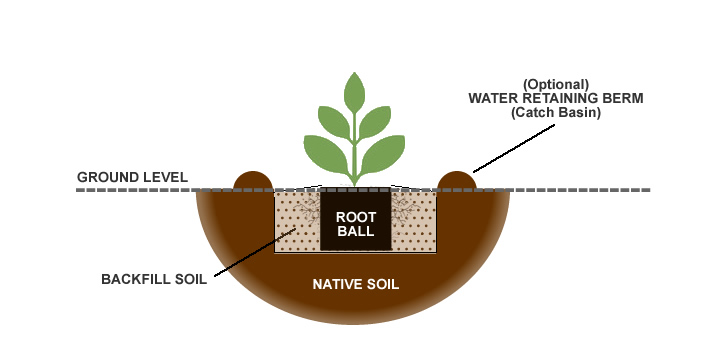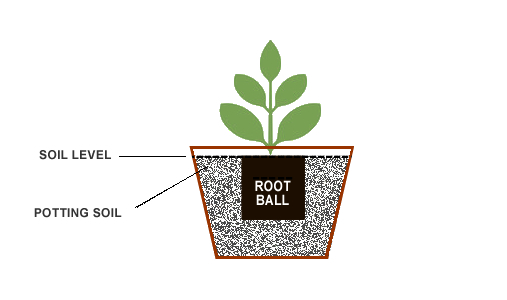Perennial ferns are very easy to grow when planted right and in the right spot.
Here's a breakdown of what you need to know...
Cultural Preferences
Soil
Most perennial ferns will grow well in in average moist well-drained soils. As with so many other types of perennial plants, most perennial ferns do not like a constantly wet soil. It's a good idea to know the moisture needs of specific types of perennial you intend to grow. Some prefer a consistently moist soil while others don't mind a drier soil. You can find specific moisture preferences under the Description tab on every fern page in Wilson Bros Gardens.
Soil pH
Not all species of perennial ferns prefer the same range in soil pH. Therefore, it's a good idea to know the soil pH needs of specific types of perennial ferns you intend to grow. You can find specific soil pH preferences under the Description tab on every fern page in Wilson Bros Gardens.
Testing Soil pH
Soil pH is a measurement of the alkalinity or acidity of soil and is measured on a scale of 1-14, with 7 as the neutral mark. Any measurement below 7 indicates acid soil conditions, and anything above 7 indicates alkaline. If you're unsure about the pH of your soil, or whether or not it's suitable for growing the specific type of fern you intend on planting, it's a good idea to test the soil pH in the planting area. You can quickly test soil pH with an inexpensive soil pH tester probe. To raise the pH (make more alkaline) you can add pelletized limestone to the soil. To lower the pH (make more acid) you can apply Soil Sulfur, Aluminum Sulfate, or Chelated Iron. Adding organic compost to the soil or using compost as mulch can also help to increase acidity and maintain acid soil conditions.
Learn More: What is Soil pH and How To Adjust It?
Light Needs
When most folks think about ferns they think about shade. It is true that many varieties of perennial ferns like a shady to partially shaded site. However, there are some ferns that will tolerate more sun. Therefore, it's a good idea to know the light needs of the specific types of perennial ferns you intend to grow.
Planting Perennial Ferns In The Ground
Scroll down for container planting tips
Step 1
Start by digging your planting hole at least two to three times as wide and no deeper than the rootball. The wider the hole the better. Place native soil removed from planting hole around the perimeter of the hole, in a wheel barrow, or on a tarp.
Step 2
Depending on the type, fertility and porosity of the soil, and the specific needs of the fern(s) you'll be planting, you might need to amend the native soil. When planting in dense clay or poor soil it is often beneficial to thoroughly mix in some good organic matter, such as aged compost, sand, and/or a good planting mix at a 50/50 ratio with the clay soil. When planting in very sandy, quick-draining soil you might need to mix in some top soil, peat moss and/or compost to help retain moisture. When planting in fertile, loamy, well-drained soil there might not be a need for adding a soil amendment, though some composted organic matter might be beneficial to increase soil acidity.
Step 3
To remove your fern from the container it was growing in it is best to cut away the container. Be careful not to damage your fern when removing it from its container. After having removed the plant from the container, if necessary you can use your finger tips to very gently loosen some feeder roots around the surface of the rootball.
Step 4
Set your fern in the planting hole so that the top edge of the rootball is at or slightly above ground level.

Step 5
After setting your fern in the planting hole, use one hand to hold the plant straight and your other hand to begin back-filling your soil mixture around the root ball, tamping as you go to remove air pockets. When you have filled the hole to the halfway point you can soak the soil. Then continue back-filling to the top edge of the rootball.
Step 6 (Optional)
When planting far from a water source, you can use remaining soil mixture to build a low water retaining berm (catch basin) around the outside perimeter of the planting hole. This basin will help to collect water from rainfall and irrigation often reducing the need for hand-watering while the plant is establishing itself. The berm can be removed after a growing season.
Step 7
Next, deeply water the planting area, including the root ball, to a depth equal to the height of the root ball.
Step 8
Spread a 1-inch layer of shredded or chipped wood mulch or pine straw around the planting area to conserve moisture and to suppress weed growth. As the mulch decomposes it will add vital nutrients to the soil that your ferns will appreciate. Avoid using freshly chipped or shredded wood for mulch until it has cured in a pile for at least 6 months, a year is better. Also avoid placing or piling mulch directly against the base of your fern as this could cause the stems to rot.
Planting Ferns In Pot
When growing in pots, most perennial ferns appreciate a consistently moist soil. We recommend using a quality potting mix in a container that has a drainage hole(s).
Make sure to choose a container that is large enough to allow for 2 to 3 years of growth before shifting up to a larger size container. This might mean your planting pot would be 4-6 inches or more in width than the root ball of your plant. If you will be planting other plants in the same container with your fern up the size of the container.
Container color will matter as well. Not only will you want to pick a color of container that goes well with the foliage color and form of your perennial fern, you'll also want to pick a container that matches the style of your home or other structures and other plants in the surrounding environment.
Many nursery & garden centers offer a wide variety of containers to choose from. Before heading out to buy a container take pictures of your home and the surrounding environment. Doing so will help you to choose just the right color and style.
Container Planting Instructions
Step 1
Before filling your container with the soil mix, we recommend lining the bottom with shade cloth or a porous landscape fabric. This will keep the drain holes from becoming stopped up with soil.
Step 2
To remove your fern from the container it was growing in, grasp the base of the plant and try to very gently lift and remove it from its container. Be careful not to damage your fern when removing it from its container! If the rootball is stuck in the container either cut the container away or place the plant on it's side and gently pound on the side of the container to loosen the rootball. After having removed the plant from the container, use your finger tips to loosen some feeder roots around the surface of the rootball.
Step 3
Pour a small amount of your soil mixture in the bottom of the container. Set the rootball of your fern plant in the container and make necessary adjustments by adding or removing some soil so that the top edge of the root ball will sit 1/2" to 1" below the rim of the container.

Step 4
Backfill with your potting soil around root ball, tamping as you go, until the level of potting soil is even with the top edge of root ball.
Step 5
Water thoroughly until water starts to drain from the holes in the bottom of the container. Add more potting mix if settling occurs during watering.
Step 6 (Optional)
Apply a 1/2" layer of wood chips or sphagnum moss to soil surface to help conserve moisture.

